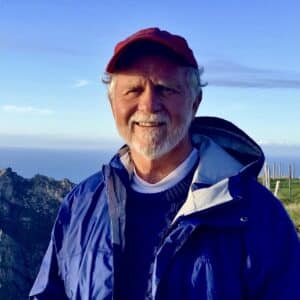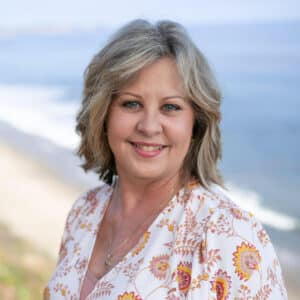I began with the sainted story of California.
Like all of life, and the history of every people and every place, the story of California is a complex one, even a messy one. On the one hand, what we know best is from the perspective of the Europeans who came from Spain in the 17th-century. Some were missionaries like Father Junipero Serra who walked from his ship in the gulf of what we now call Mexico to the capitol city of New Spain, Mexico City, up through Baja California into Alta California, beginning in San Diego on the north, establishing missions in San Juan Capistrano, Santa Monica, Santa Barbara, and more, finally to San Francisco (Saint Francis).
But it is also the story of Spain as a colonizing power whose reach extended into the “new world” with hopes for resources of all kinds to empower the power of their king. That meant that Serra’s travels included the Spanish military, who brought their influence into the little outposts of the Church along the California coast, meeting earlier explorers and settlers who had found their own “new world” centuries earlier, immigrating from Asia over the Bering Straits down into North America. Whose home was it? From the very beginning it was messy, and there is no other history than that, about which much more could be said.
In truth, it is not altogether different than the Greece of Alexander the Great whose empire extended throughout the known world of the time, overpowering whomever and whatever he found in the 2nd and 3rd centuries B.C.; or the Roman Empire of a century or so later whose power ruled the Mediterranean world with might for the next centuries, even extending itself through the European continent across the small sea to the British Isles; or of the Polynesian peoples who found their way to Hawaii 1500 years ago, spending the next centuries fighting, killing and cannibalizing, sacrificing children and women by the thousands to satisfy their “gods” of power and might; or the Vikings of 1200 years ago whose plundering, murdering, and raping of Scotland and Ireland over centuries make them sound to our modern ears like Scandinavian barbarians, the “ISIS” of their day. In our very modern world, we romanticize some stories, missing the mess of history.
But Serra’s story was different too, critically so, with a vocation born of a deeper justice, a deeper mercy, walking back to Mexico City to argue for the protection of the native peoples, trying to find a way forward for everyone who wanted a home there. Simply said, he had eyes to see the sorrow that came with his coming, compounded by the sorrow that was already present in the centuries of aggression and violence of “the first nations” of California, and that too is the history.
Twice last week I publicly reflected on these early years of what we now know as California, lingering for a while over its capitol city, Sacramento, on my way to an argument for a sacramental vision of life and learning and labor, speaking first to a gathering of folks in the church and the marketplace, and then to a university faculty. Pointedly, I observed that in the generation after Serra, the Spanish Captain Gabriel Moraga explored the hills on the eastern side of the great bay, what we now know as Oakland and Berkeley, wondering what might be beyond. With his soldiers, they found a great valley graced by the great mountains we now call the Sierra Nevadas, full of flowers and trees, birds and fish, sunshine and blue sky, exclaiming, “Es como el sagrado sacramento!”
This is as beautiful as the holy sacrament!
From that amazed moment, we have the city of Sacramento, capitol of California— and so in my lectures in San Diego and Los Angeles, I chose to begin with the history that still shapes the people and their place. One cannot make sense of California in the 21st-century without remembering to remember its missional history. The architecture itself tells the tale, with clay-tile roofs almost everywhere, adobe-colored buildings in cities small and large, and bells and more bells ringing through the generations across the Golden State, “Es como el sagrado sacramento!”
Not surprisingly, I spent my time working out a way of seeing seamlessly, which I argued was only possible if we see “sacramentally.” Drawing on the biblical tradition, as well as the work of the contemporary French philosopher Simone Weil, I wanted my audiences to understand that dualisms of every sort betray us because we imagine a chasm between heaven and earth that does not exist, seeing some things as “sacred” and some things not. That worship and work are fundamentally different, for example, one being more important to God than the other, one being “spiritual” and one being “secular.” Rather, if our truest vocation is the imitation of Christ, the very image of God, we see that everyone and everything matters, sacramental as it all is, holy as it must be. In a thousand ways our human experience of life in the world should be a window into the mystery and wonder of the reality of heaven touching the reality of earth, a “sacrament” so to speak, if we have eyes that see.
And that is always the issue for us, frail, fallen human beings that we are. Do we have eyes that see? Father Serra did, naming his missions after sainted folk, remembering them in hope for what might be. Captain Moraga did too, naming his moment with the grace of the holy sacrament, seeing even and especially the small things of life as holy. Ordinary people in ordinary places they were, but each had eyes to see more meaning written into the meaning of who they were and what they did.
That is our task too, ordinary people that we are living in the ordinary places that are ours, called to see all of life sacramentally, understanding our vocations as signposts for a more coherent world, where things that are real and true and right are woven into the fabric of the world— eating and drinking, worshiping and working, loving and living —seamlessly connecting the world that is with the world that someday will be.
With the mess that is mine, with the horrors of history that we bear, with the sorrows that sometimes overwhelm, I live my life for that.





